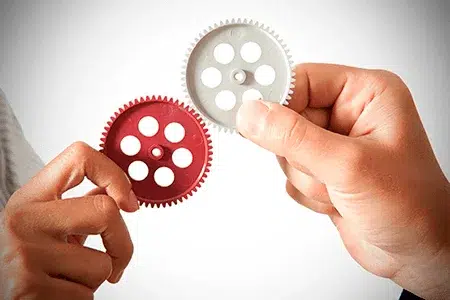
Rapid prototyping has revolutionized the way products are developed and brought to market. This innovative approach allows designers and engineers to quickly turn their ideas into tangible prototypes, speeding up the product development cycle and reducing costs.
In this article, we will explore how rapid prototyping models are shaping the future by enabling faster innovation, better designs, and more efficient production processes.
The Evolution of Rapid Prototyping
Rapid prototyping, also known as 3D printing or additive manufacturing, has come a long way since its inception. What started as a tool for creating basic models and prototypes has now evolved into a sophisticated technology that can produce complex and functional parts with a wide range of materials. Here are some key points in the evolution of rapid prototyping:
Early Stages
- In the early days, rapid prototyping was mainly used for creating simple visual models to showcase design concepts.
- The technology was limited in terms of materials and accuracy, making it unsuitable for producing functional prototypes.
Advancements in Technology
- Technological advancements have led to the development of more advanced 3D printers capable of producing highly detailed and functional prototypes.
- New materials, such as metals and composites, are now used in rapid prototyping, expanding the range of applications.
Integration with CAD Software
- Rapid prototyping is now seamlessly integrated with computer-aided design (CAD) software, allowing designers to easily convert digital models into physical prototypes.
- This integration has streamlined the prototyping process, reducing the time and effort required to create prototypes.
The Impact of Rapid Prototyping on Product Development
Rapid prototyping has had a profound impact on product development across various industries. By enabling quick iteration and validation of designs, rapid prototyping accelerates the product development cycle and brings products to market faster. Here are some ways rapid prototyping is shaping the future of product development:
Faster Innovation
- Rapid prototyping allows designers to quickly test multiple design iterations, fostering a culture of innovation and creativity.
- By reducing the time required to develop prototypes, companies can bring new products to market faster, gaining a competitive edge.
Better Designs
- Rapid prototyping enables designers to easily identify design flaws and make improvements early in the development process.
- By creating physical prototypes for testing and evaluation, designers can ensure that the final product meets the desired specifications and quality standards.
More Efficient Production Processes
- With rapid prototyping, companies can quickly iterate on production tooling and fixtures, improving manufacturing processes and reducing downtime.
- By producing customized or low-volume parts on-demand, rapid prototyping helps companies optimize their production processes and reduce waste.
The Future of Rapid Prototyping
Looking ahead, rapid prototyping is poised to play an even bigger role in shaping the future of manufacturing and product development. As the technology continues to advance, we can expect to see the following trends in rapid prototyping:
Expanded Material Options
- Advancements in material science will lead to the development of new materials that are better suited for rapid prototyping applications.
- More materials, such as biodegradable plastics and sustainable composites, will become available for producing environmentally friendly prototypes.
Integration with Industry 4.0
- Rapid prototyping will be integrated with other digital technologies, such as artificial intelligence and the Internet of Things, to create a seamless production process.
- Automation and data analytics will further improve the efficiency and accuracy of rapid prototyping, allowing for more complex and customized designs.
On-Demand Manufacturing
- Rapid prototyping will enable on-demand manufacturing, where products are produced only when needed, eliminating the need for large inventories and reducing waste.
- Companies will be able to offer personalized products and customized solutions at a competitive cost through rapid prototyping technologies.
In conclusion, rapid prototyping models are shaping the future by enabling faster innovation, better designs, and more efficient production processes. As the technology continues to evolve, we can expect rapid prototyping to play an increasingly important role in product development across various industries.